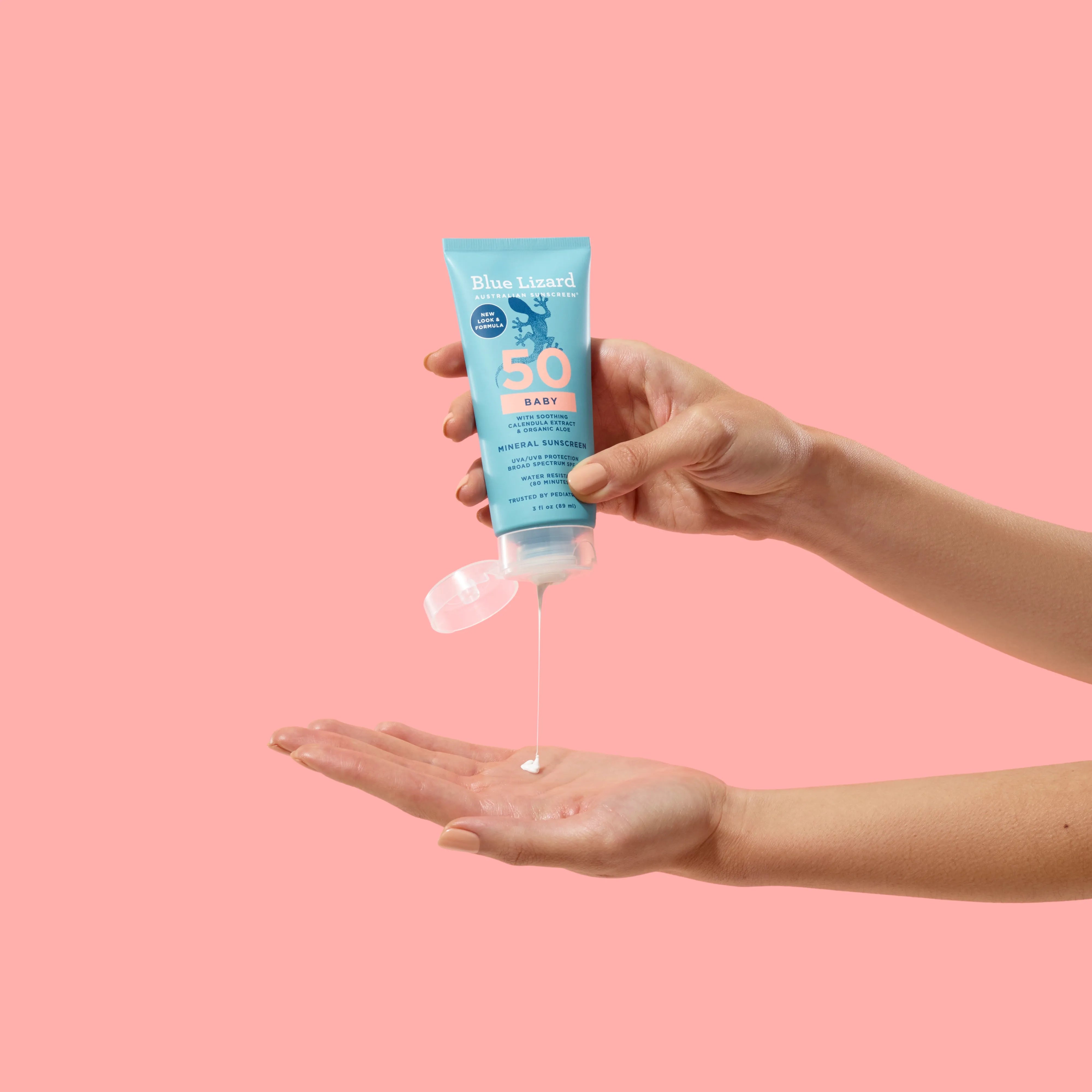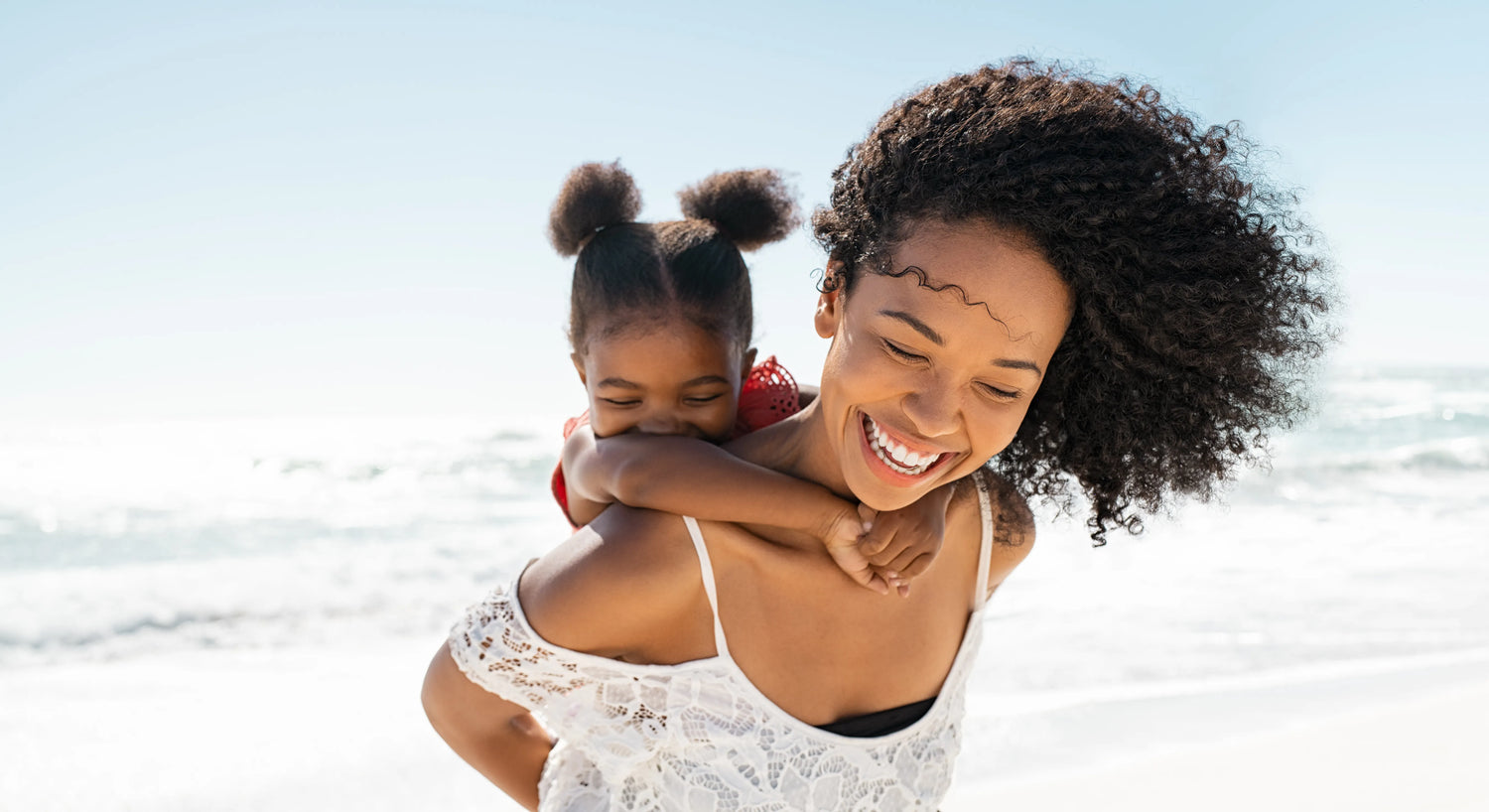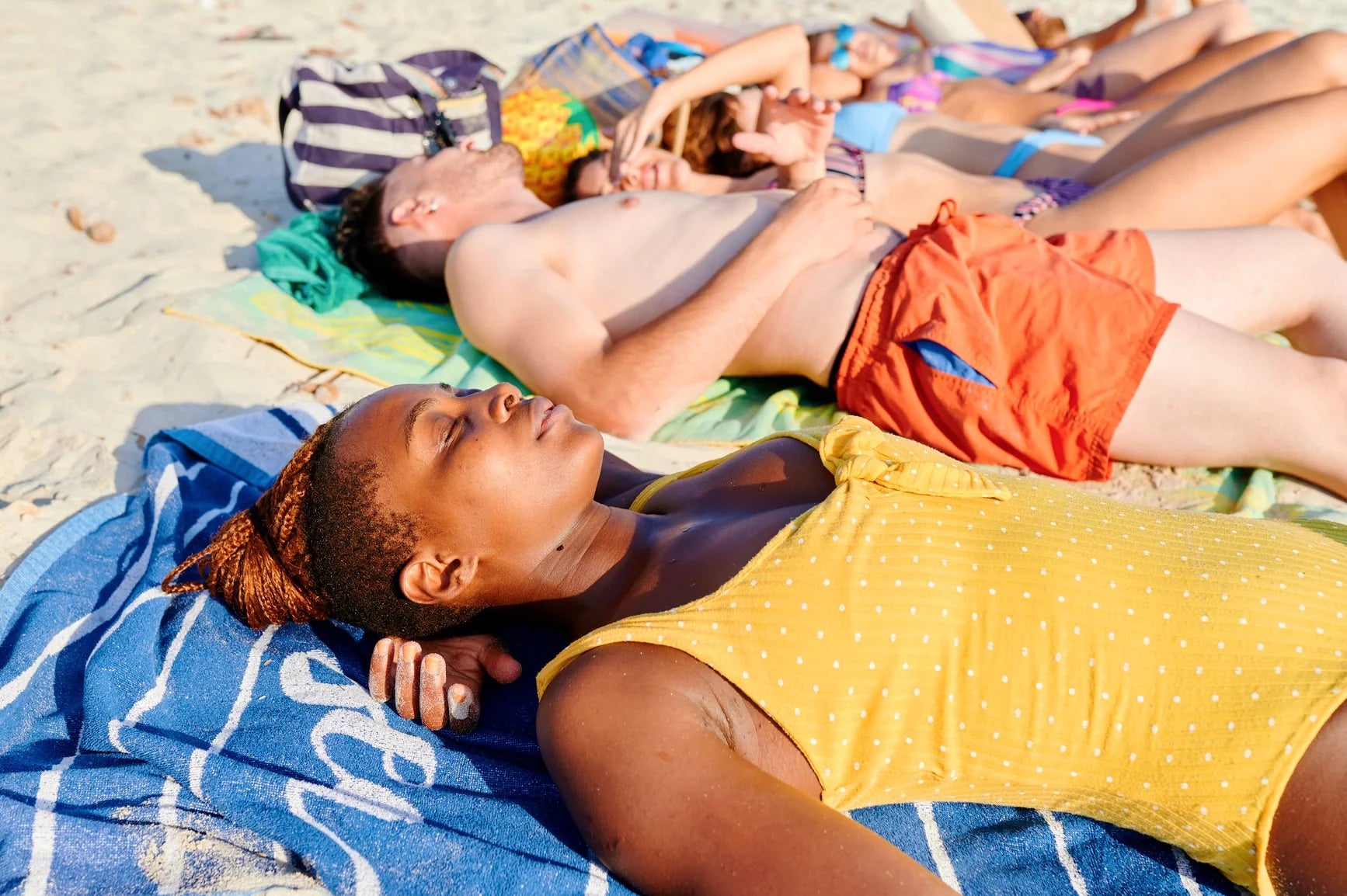Whether they’re spending an afternoon in the backyard or a day at the beach, sun safety is an important part of keeping your child happy and healthy. Sunburns can happen in less than 15 minutes, and having just one blistering sunburn during childhood can more than double your chances of developing melanoma later in life.
You and your child should be wearing sunscreen any time you go outside. But, with so many options available, how can you be sure which sunscreen is best for your child?
What’s the difference between mineral and chemical sunscreens?
There are two main types of sunscreen active ingredients: mineral actives — also called physical actives — and chemical actives. Both types do what sunscreen is supposed to do: they protect your skin from the sun to help prevent sunburn and other skin damage. But how the two types of sunscreens protect you is what separates them.
Mineral sunscreens protect your skin by using minerals, namely Zinc Oxide and Titanium Dioxide, to reflect the sun’s rays away from your body. This is why they are often referred to as physical sunscreens; the active ingredients aren’t absorbed into your skin, and instead form a thin barrier on the surface. When you use a sunscreen with an SPF of 30+, 98% of the sun’s UVA and UVB rays never reach your skin.
On the other hand, chemical sunscreens use chemicals to protect your skin from UV rays. Instead of staying on the surface of your skin, the active ingredients in these sunscreens are absorbed. These chemicals then absorb UV rays and convert the rays into heat.
Mineral-Based Sunscreen: There is a variant of mineral sunscreens called mineral-based sunscreens. These sunscreens are similar to mineral sunscreens in that they use either Zinc Oxide or Titanium Dioxide (and sometimes both) as active ingredients, but they combine the minerals with chemical active ingredients to aid in sun protection and performance.
Click here to learn more about mineral and chemical sunscreens.
Look for Safe Sunscreen Ingredients
Some studies show that the active ingredients in chemical sunscreens may have negative effects on your body and the environment. Oxybenzone is the most common active ingredient found in chemical sunscreens today (it’s in over 60% of all non-mineral sunscreens). These ingredients have the potential to disrupt hormone production when absorbed through the skin. Remember: chemical active sunscreen ingredients are designed to absorb into skin before delivering sun protection. Studies show that higher concentrations of Oxybenzone in the body may lower testosterone levels in men.

Chemical sunscreen active ingredients also pose a risk to the environment. Oxybenzone and Octinoxate may damage coral reefs by causing what is known as “coral bleaching.” The chemicals cause the coral to reject its food source, which eventually leads to death.
Hawaii and Key West, Florida have passed bills banning the sale of sunscreens containing Oxybenzone and Octinoxate to protect their coral populations from coral bleaching. These bills will go into effect in January of 2021.
Click here to learn more about the effects Oxybenzone and Octinoxate may have on our coral reefs.
Does Your Child Have Rosacea or Eczema?
Not every sunscreen works for every skin type, but sunscreens with mineral-only active ingredients are ideal for sensitive skin, including your child’s or baby’s delicate skin. These ingredients are gentle enough for people with skin conditions like eczema and rosacea, while still providing excellent protection. To ensure you’re using the right sunscreen, always read the label carefully.
Research from the American Academy of Allergy, Asthma & Immunology (AAAAI) confirms that mineral sunscreen ingredients do not trigger eczema flare-ups, unlike chemical sunscreen ingredients. Additionally, the National Eczema Association and the National Rosacea Society recommend mineral sunscreens for people with these conditions.
Blue Lizard offers three sunscreen lines tailored for sensitive skin: Baby, Kids and Sensitive. These sunscreens use only mineral active ingredients and deliver dermatologist-recommended, broad-spectrum UVA/UVB protection.
Do higher SPFs provide better sun protection?
SPF stands for “Sun Protection Factor” and measures a sunscreen's ability to protect against UVB rays. Regardless of SPF, every sunscreen should be reapplied at least every 2 hours, or more frequently if swimming or sweating. An SPF 30 product blocks out 97 percent of the sun's rays while an SPF 50 product blocks about 98 percent. Remember: no sunscreen protects against 100% of UV rays.

The American Academy of Dermatology recommends using a mineral sunscreen with at least SPF 30+. For optimal protection, they also stress the importance of reapplying every two hours and immediately after swimming or towel drying.
Speaking of swimming…
Water Resistance Is a Must

Your kids are more vulnerable when they go swimming, and for obvious reasons. Swimsuits leave more of your child’s skin exposed to the sun, and you’ll be (or, at least, should be) using more sunscreen on them. This is where it’s important to check for the words “water resistant” on your sunscreen bottle.
It’s important to keep in mind that absolutely no sunscreen is waterproof . A quarter of the sunscreen you apply is washed off within the first 20 minutes of being in the water. Your sunscreen will continue to wash off the longer you spend in the water.
Be sure to reapply sunscreen after towel drying and according to the water resistance rating on the bottle or tube. Sunscreens provide either 40 minutes or 80 minutes of water resistance. Most sport and athletic sunscreens provide the maximum water resistance of 80 minutes, but so do our Baby SPF 50+, Sensitive SPF 50+ and Kids SPF 50+ Mineral Sunscreen lotions.
Learn more about mineral sunscreens here.








